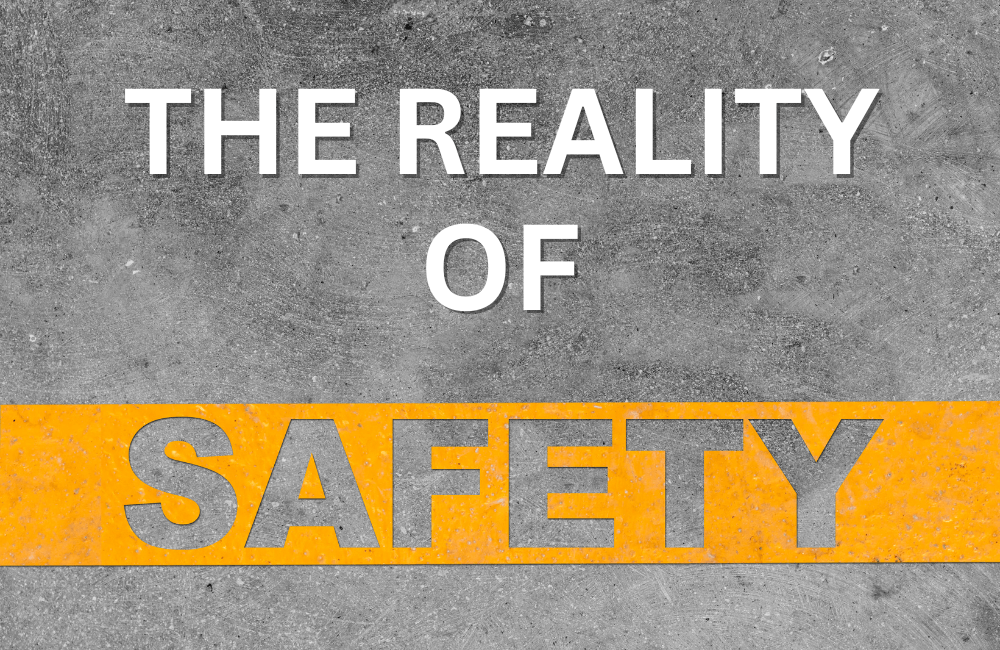PCA Articles

The Reality of Safety Measures
And what we did not know!
No one wants to contemplate an employee injury with serious life-threatening results. Accidents are part of any business. Thankfully, most accidents are small first aid patches or urgent care visits. Unfortunately, some accidents are more serious which can result in major injuries with long term hospitalization. Like most employers, the serious injury accident was the accident for which we were not prepared. The purpose of this blog is to provide information on how to avoid injuries, how to prepare in advance of an injury and what to expect if one of your employees experiences a serious injury on the job.
We own a small painting company with roughly 25 painters that serves the residential repaint market near Sacramento Ca. We have been operating as a licensed contractor since 2002 and we have painted thousands of homes. Thankfully, we never experienced any serious accidents and have only had a handful of small workman comp claims. That all ended on May 17th of this year, when one of our long time employees went on to the roof of a substantial sized custom built home with an elevation of about 30 feet and a steep pitch roof to paint a chimney. All of the things that could go wrong did go wrong and our employee ended up falling off the roof and suffered serious injuries.
As a company, our mission is to protect our employees and provide all of the necessary safety equipment and training to keep them safe.
What were we doing right?
- As a company we provide our employees with all of the safety equipment and tools necessary to stay safe.
- We provided a tailgate safety topic every week and included the topic in English and Spanish on our calendar. Every forman starts every week with the safety training clearly available.
- We provided water for every crew on every job.
These are just a few of the things we were doing prior to the accident. In addition to these items, our Project Managers opened every job with the Foreman and the customer to discuss the project, products, colors, supplies as well as any issues that may need handling. We considered these good common sense policies for use in the daily operations of any painting company. More than likely, most companies use this same philosophy. But there was so much more to know and even more to do.
After The Accident: What One Needs To Know
- In addition to reporting an accident to your insurance carrier you have 8 hours to report the accident to Cal-Osha or face a $5,000 fine. That fine is not negotiable nor will it be forgiven if you fail to report the accident to Cal-Osha. Your region / state may not have this requirement.
- Approximately 3 weeks after the accident Cal-OSHA visited unannounced and without prior contact and informed us that they were there to conduct their investigation.
- The investigator requested several documents that employers are required to have available upon request for both Cal-Osha and employees.
- These documents include:
- Code Of Safe Practices
- Injury Illness Prevention Program
- Heat Illness Prevention
- Covid 19 Prevention Program and Policy
- Copies of Safety Meetings – With Competent Person Record
- Cal-Osha Form 300 Accident Log (5 years)
- Names and phone numbers of employees that were on the job site
An employer is required to have all of these documents on site; and, these documents are required to be updated on a regular basis and include any new changes that OSHA implements as part of their requirements. Note: Not having these documents will result in citations being issued and can carry a serious penalty with a fine for each missing document(s) that are not current. In addition to all of these documents, an employer is required to conduct safety meetings every 10 days and they are to be led by a designated competent person. In other words, the person doing the training must certify that they have received the necessary training to be considered competent.
The Good News
Most Workman’s Comp insurance carriers have prepared a safety program for you as part of your insurance policy. This document will most likely cover your Injury Illness Prevention Program (IIPP). You will definitely need to review it and amend it to include any new regulations that have been issued by the state within which you are doing business. Make sure the IIPP is tailored for your specific industry and company needs.
The Painting & Decorating Contractors of California is extremely helpful and can provide guidance, resources and advice for updating your safety program. They also offer a free consultation service for members to navigate through the OSHA requirements, what to expect from OSHA and what your rights are as an employer.
A special note is needed: our company took the approach that Cal-Osha was actually on our team in updating and building our safety program. The outcome was beneficial for our company and our employees. This approach was way less confrontational and the citations and fines were reasonable, considering what the fines could have been. Cal-OSHA also offers a consultation service that will evaluate your safety program and make recommendations based on their audit to make sure you are complying with all of their rules and regulations. This service is free and they do not report their findings to the enforcement side of Cal-Osha. It is a good idea to reach out to them or a service like theirs in your state. There are Companies that specialize in safety programs for painting contractors. If you’re not sure about your safety program, one of these companies might be a good option to explore.
Our Takeaway
- Make sure you have all of the safety programs and paperwork required by your state
- Read and understand your safety programs
- Implement these programs
- Train and Educate your employees
- Use all available resources like the Painting Contractors Association (PCA) or your local – state group like the Painting and Decorating Contractors of California (PDCC)
- Conduct in person tailgate meetings with employees every 10 days. Have sign-in sheets and documentation of what safety topic was covered and who attended. (There are services like the PDCC that will provide tailgate safety topics in English and Spanish on a weekly basis.)
- Stay safe
Did you know?
- You are required to have an OSHA approved first aid kit on every job.
- Each crew is to have a competent person certified and trained in administering first aid.
- You are required to have employees have a respirator exam and be fitted and trained for the proper use of respirators.
- You are required to have a competent person trained in fall protection on every job. (You are required to have a Fall Protection Plan that includes a Rescue Plan)
- If Osha visits one of your job sites, you are expected to have your safety documents available for inspection and demonstrate that your employees are trained and understand your safety policies.
If you would like to know about our story please visit us at www.tricopaintng.com or contact us at info@tricopainting.com
“Grow Your Business Through Effective Hiring”
What is the most necessary resource a company has for growth? What if your most valuable resource is already stretched to its fullest capacity? If your greatest resource is already spent, you can’t grow your business.
In general, I see three variables causing individuals to make a decision to work for a company: Efficient process, Flexibility to adapt, and Ability to cast a vision for the candidate’s future. I didn’t state pay because that is an obvious factor for people, but it doesn’t play to the emotional buy-in for a company. If you want people to work for you, obviously you should be willing to meet market standards. If you want to be effective in your hiring to scale your business, you need to understand your value proposition as a company and help individuals see how it aligns with their emotional desires.
Efficient Process
“Time kills all deals,” is a quote which I hear all of the time. You are in the business of building your revenue just like every other business, so you might not even need me to mention the correlation of time and closing a deal. Have you ever thought about the emotional toll a company might have on an individual which is awaiting a response from an application or interview? It must be a necessary objective of hiring managers and leaders within organizations to help the candidate feel engaged and desired throughout the process. If you linger on giving feedback or “wait to review other candidates,” you are communicating on a level which evokes an emotional response from the candidate and it isn’t in you favor. Communicate expectations and follow up throughout the interview process, and then do as you promise.
Flexibility to Adapt
I am not telling you to make every position fully remote here, and I am telling you to be open to options. If a candidate feels rigidity throughout the process of interviewing on “how we do things;” what kind of subconscious message are they receiving? We don’t need to give in to every request of working from home full-time. What if we adjusted the way we discuss our work environment to help people feel like their desires and concerns are of value to us, so they know they will be heard when they do have a reasonable request. Don’t close doors when individuals are seeking how flexible you will be with them; communicate openness to hearing their situation and flex as capable.
Ability to Cast Vision for Candidates Future
This is the most important item for every company. Have you ever heard someone complain about “employee loyalty?” My question in retort is always, “why should they be loyal to you?” Most companies seek employees who will do something for them, but there needs to be a transition towards mutual benefit. We build loyalty with people by investing into them and offering something to them (not just a paycheck). If all we offer is a paycheck, then they will leave for a company that can increase that paycheck. Figure out what individuals want in their career progression, and help them pursue those next steps. Even if that means preparing them to leave your company for the next position. Your investment will pay dividends regardless.
If you want to talk about hiring strategies, please reach out to me. Brian@aleph-mgmt.com or (763)742-4861
About The Author

Tim Flood is a PCA Member and Owner of Trico Painting